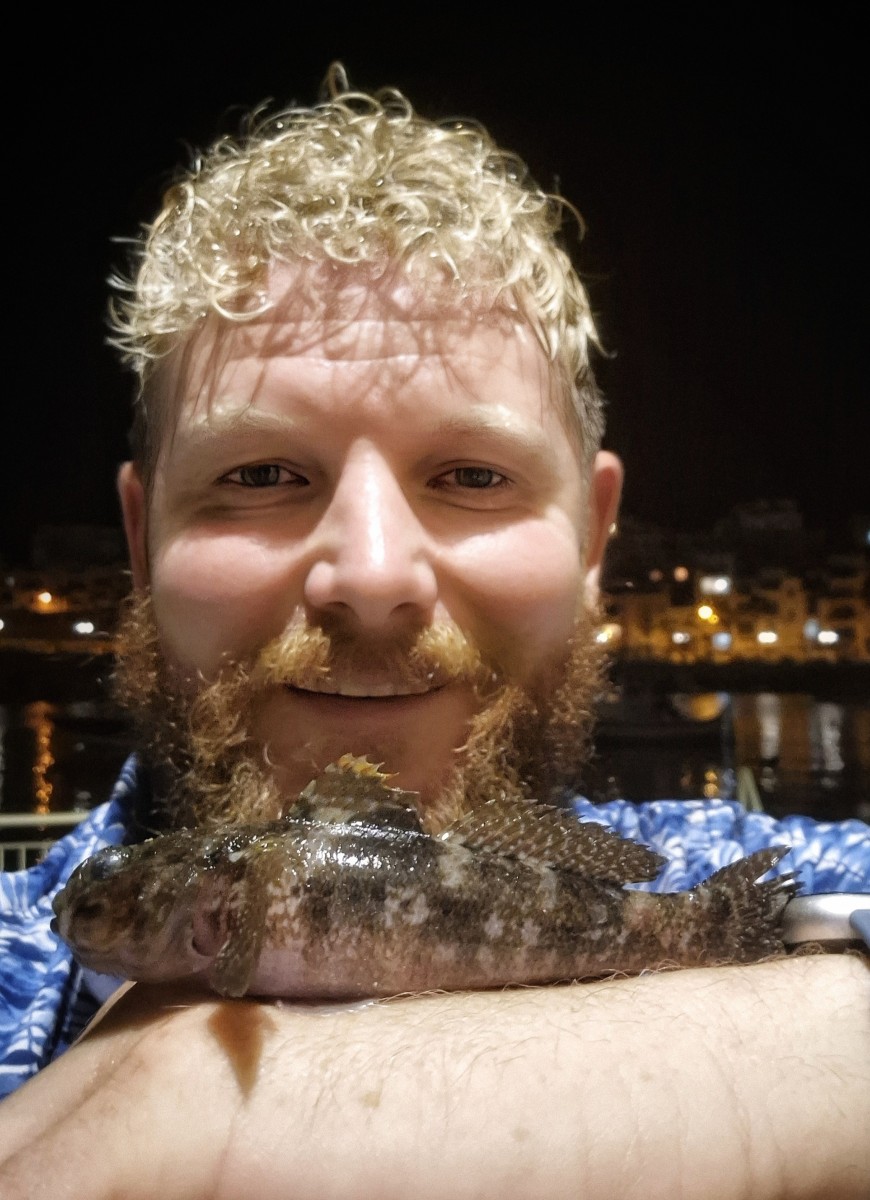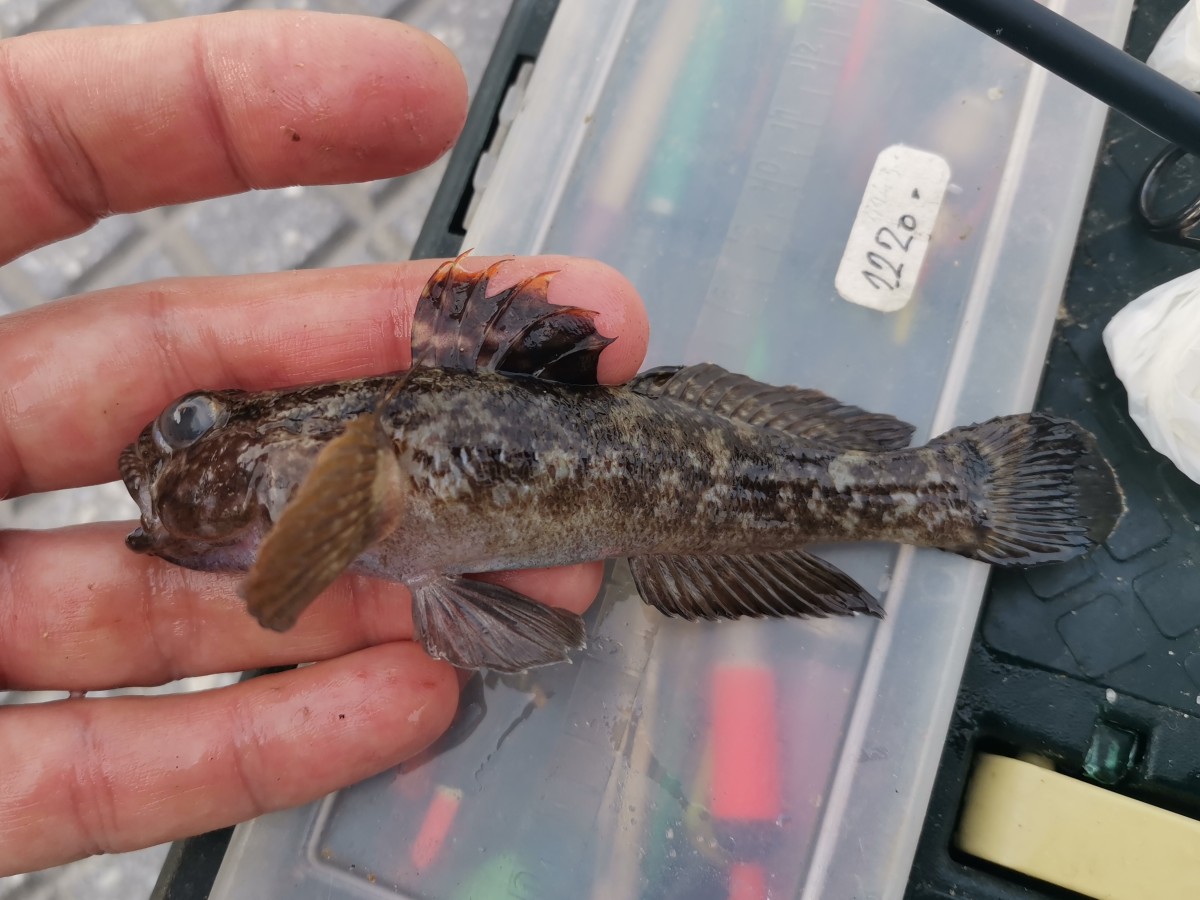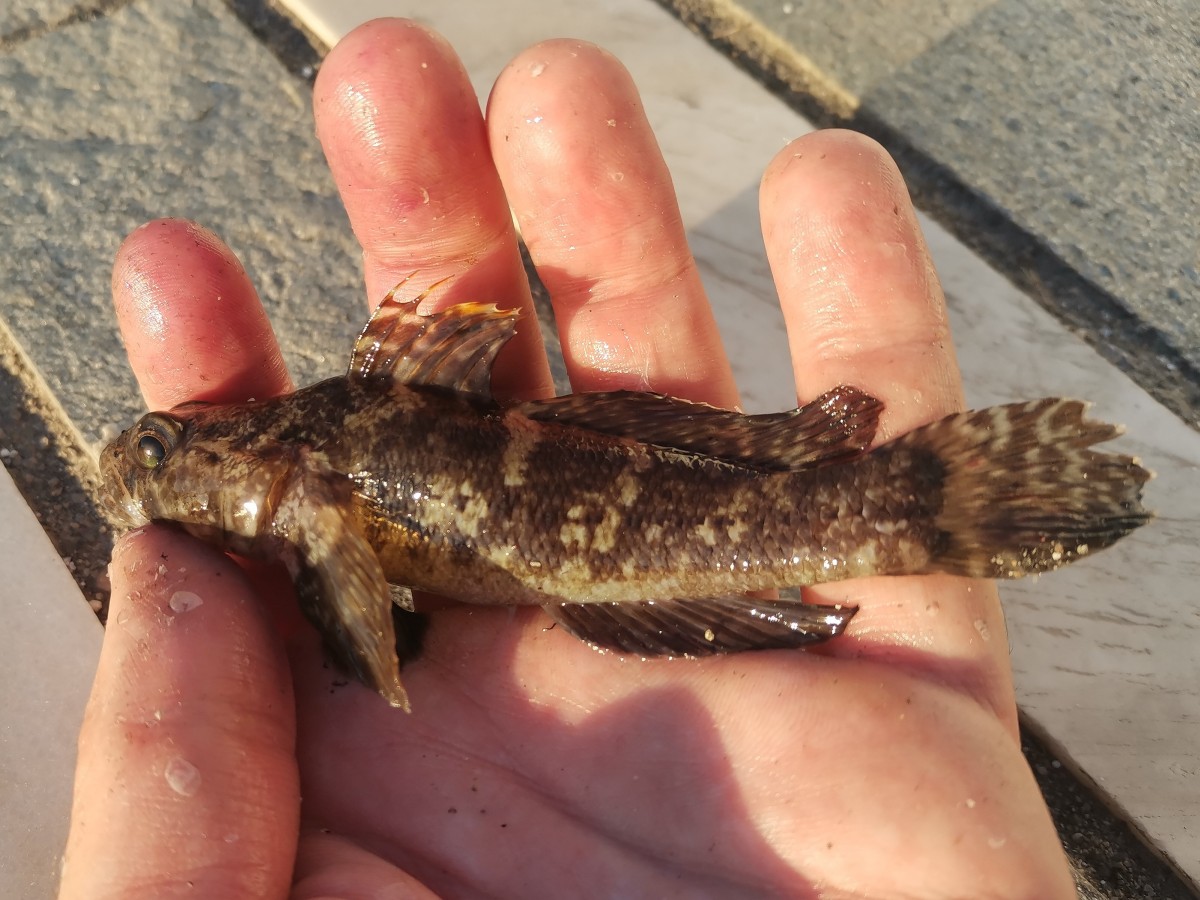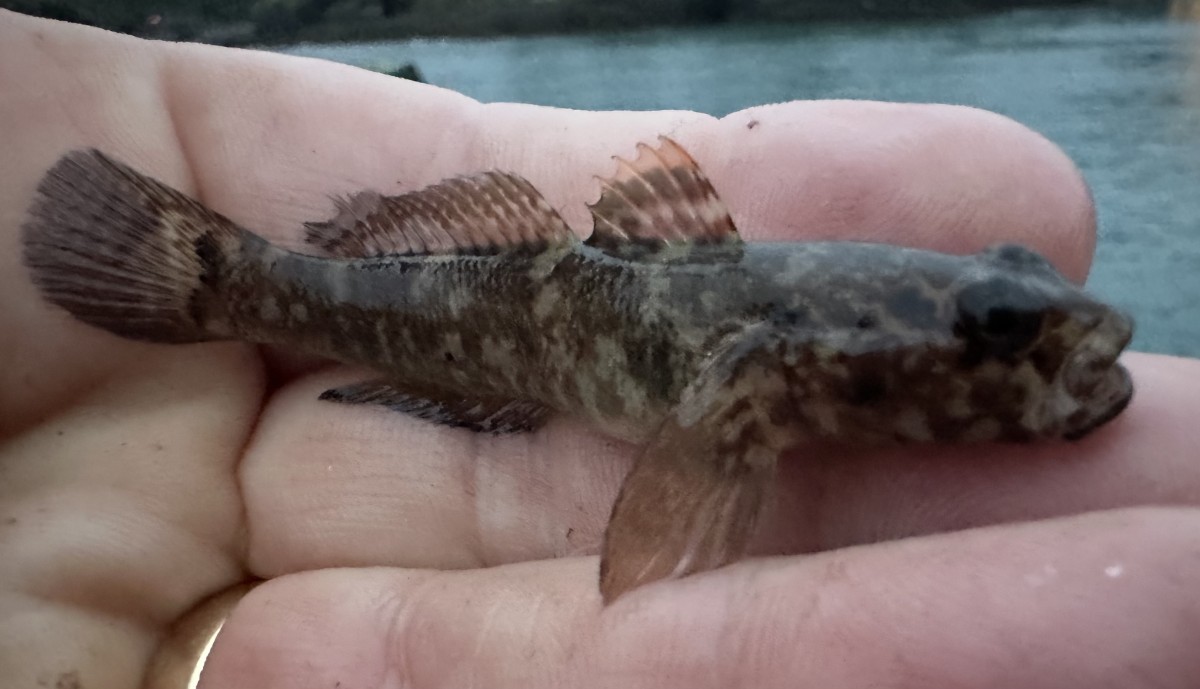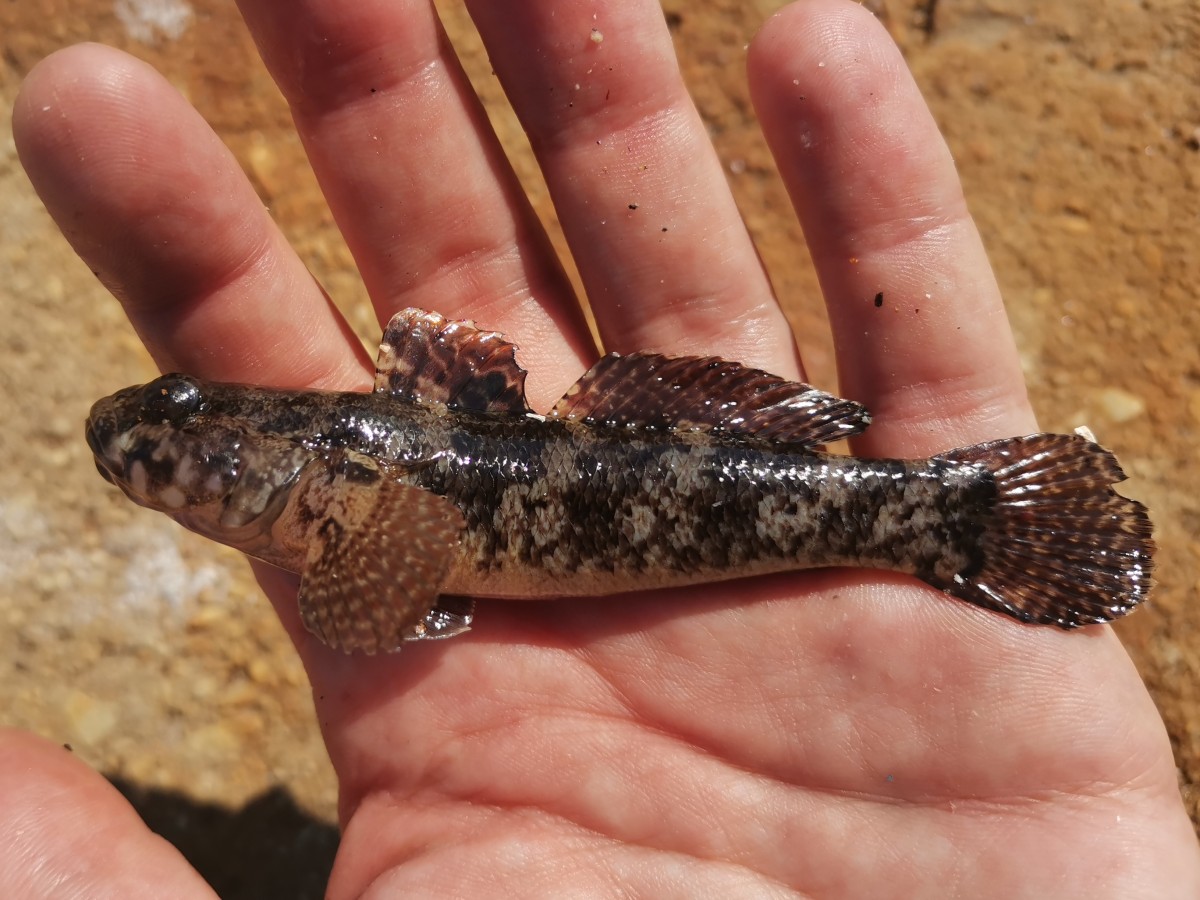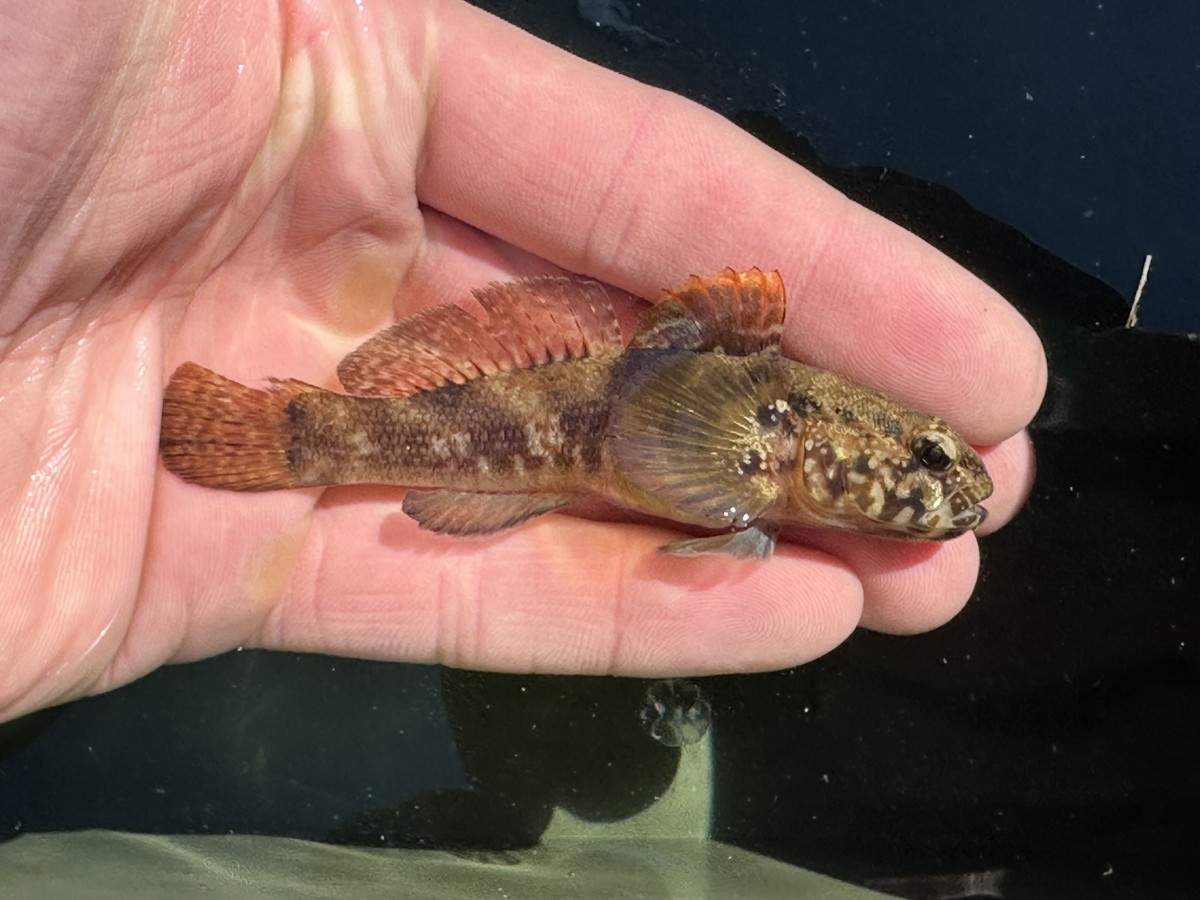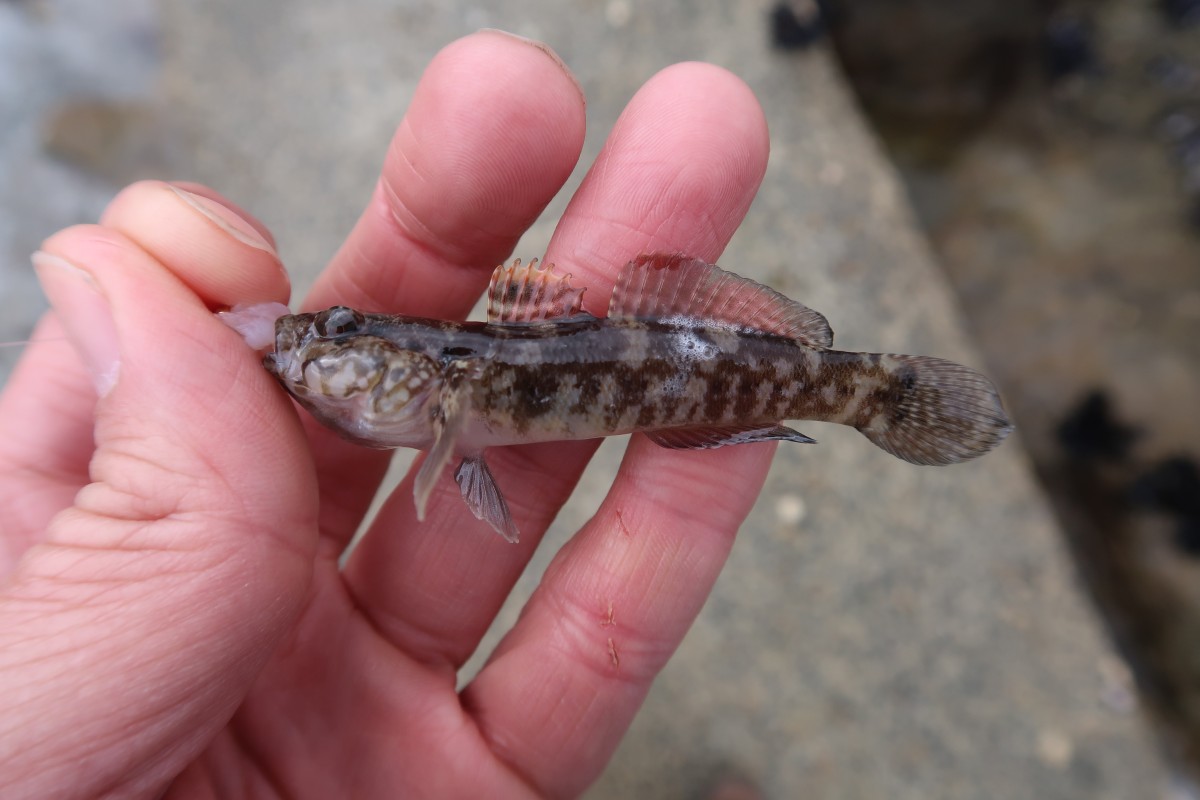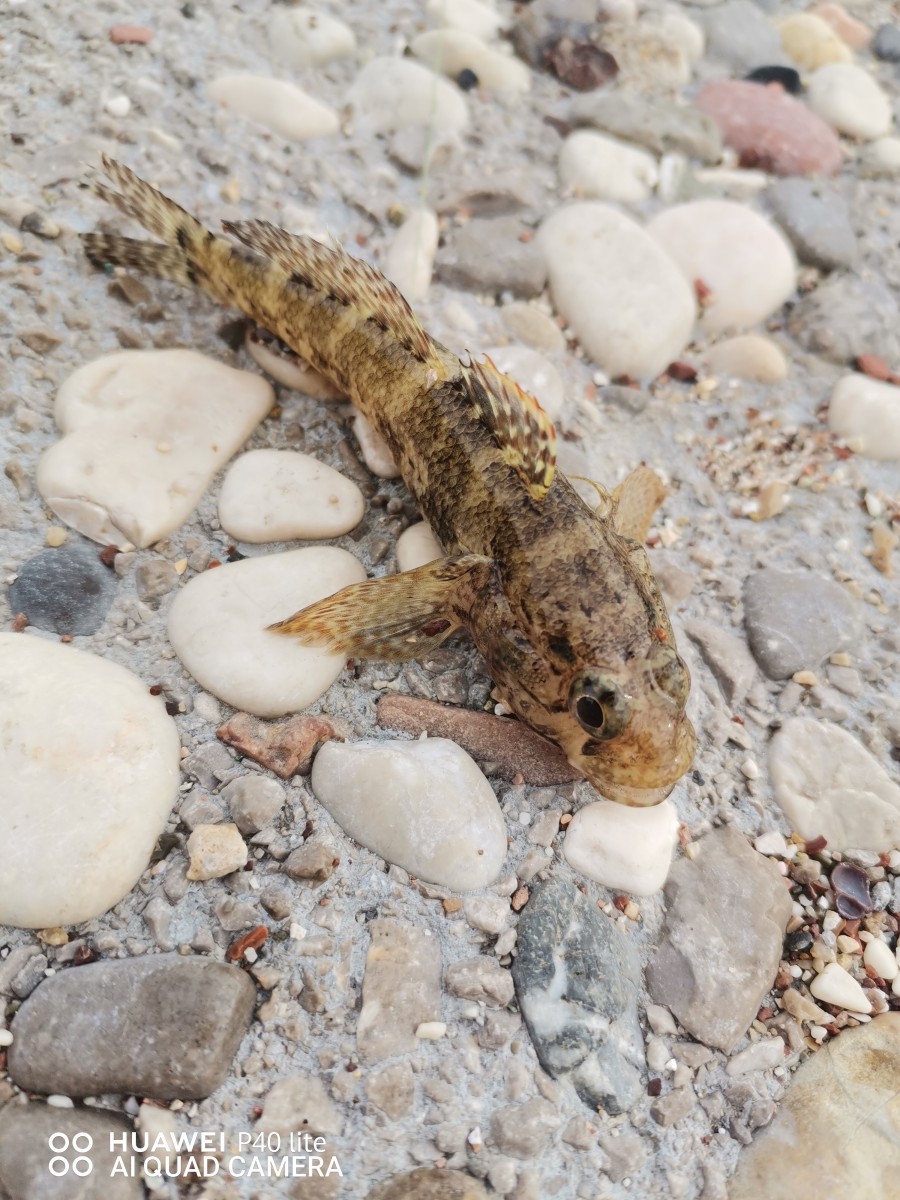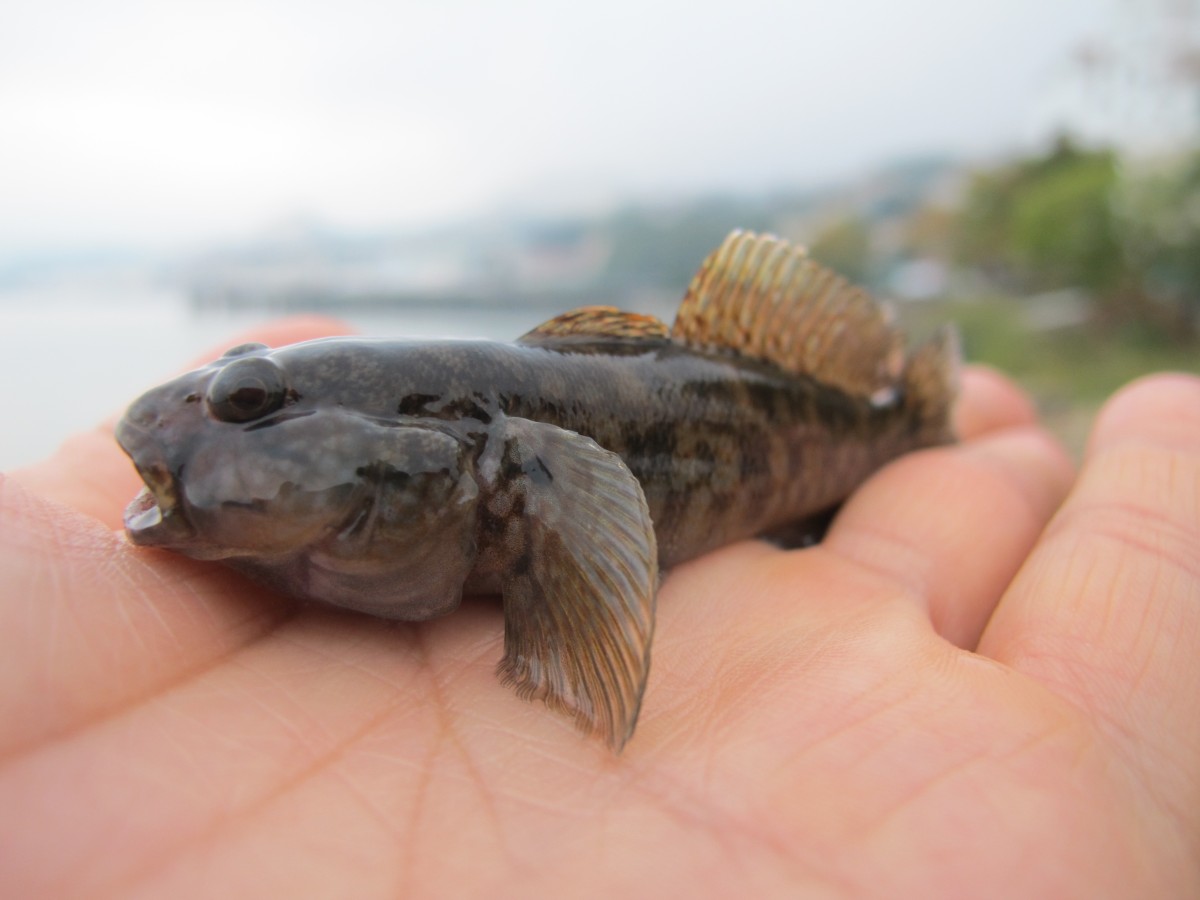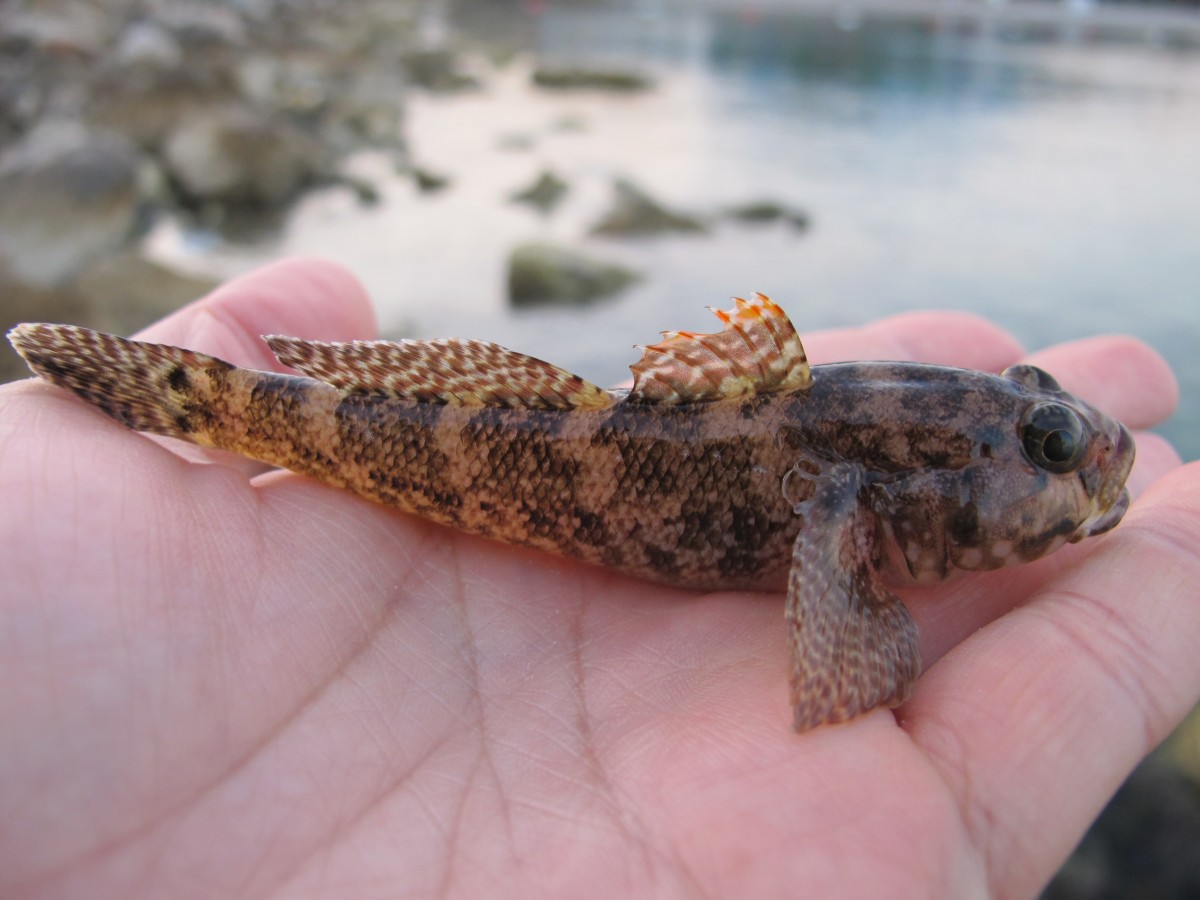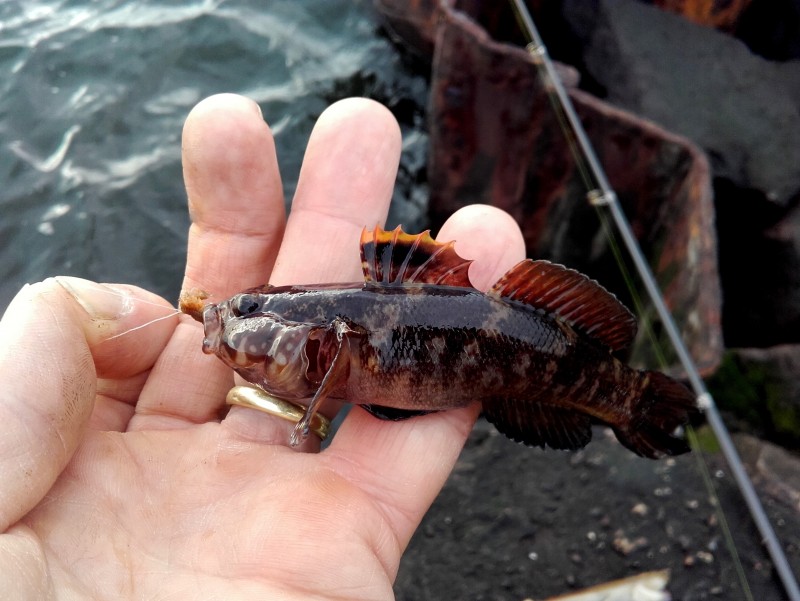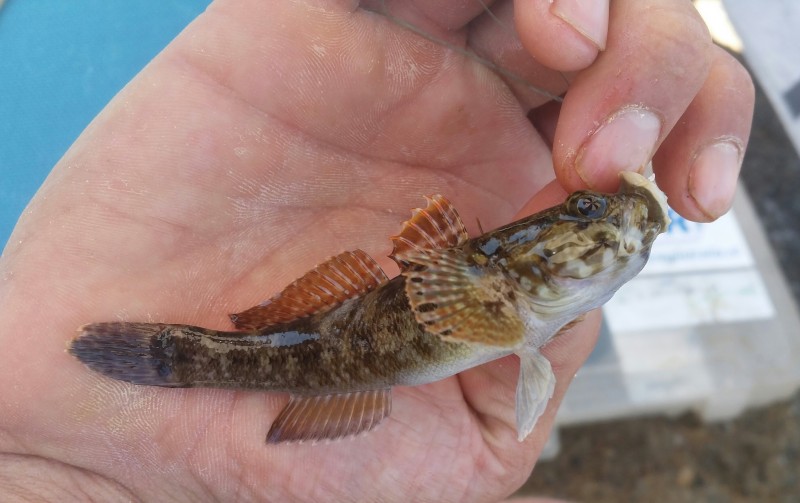Rock goby
(Gobius paganellus)
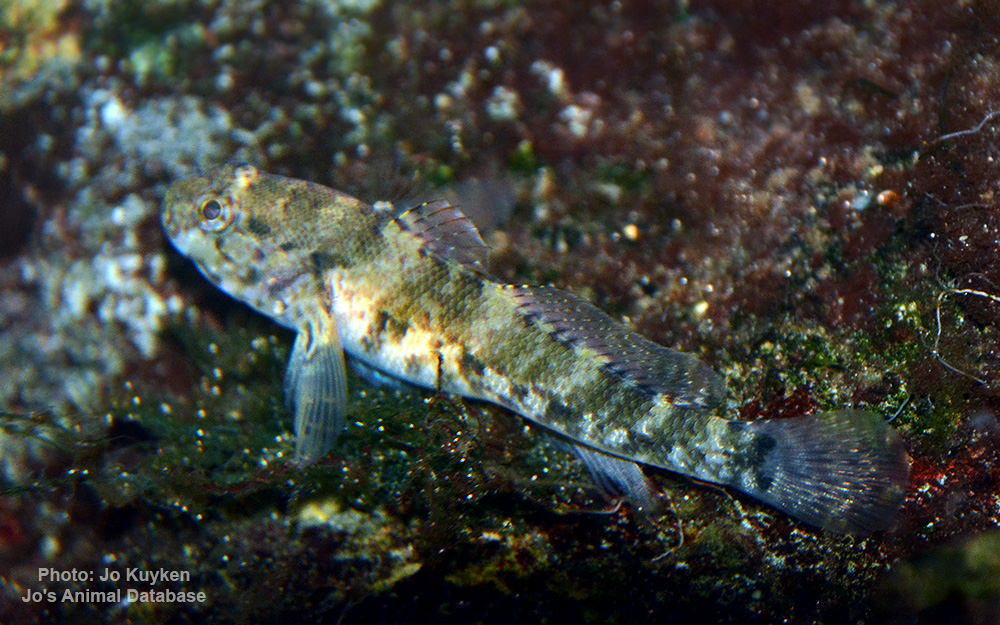
Image source: Jo's Animal Database
Classification
General data
The rock goby (Gobius paganellus) is a small coastal goby of eastern Atlantic waters, from Scotland to Senegal. It is also reported from the Mediterranean and Black Seas and is an anti-Lessepsian migrant in the Gulf of Eilat and the Red Sea. There are unconfirmed records from the area around Pointe Noire in Congo-Brazzaville.
Description
The rock goby is usually black with white blotches, but they can change colour, and males are much more black when guarding the eggs. The neck area lacks scales and there is a pale band on the top of the first dorsal fin. Both dorsal fins lack black spots on their leading edges. This species can reach a length of 12 centimetres (4.7 in) TL and has been known to live for ten years.
Distribution and habitat
The rock goby is found in the temperate East Atlantic and the Mediterranean Sea. Its range extends from western Scotland southwards to the Azores and Senegal, most of the Mediterranean Sea and the Black Sea. It sometimes migrates through the Suez Canal to the Red Sea and the Gulf of Aqaba.
It prefers rocky sea floors below the low tidemark, although it can be found in larger rock pools in Summer. It may also live in fresh or brackish water. It can be found at depths of from 0 to 15 metres (0 to 49 ft).
Behaviour
The rock goby eats small crabs and amphipods, polychaetes, larva, small fish, Calanus, copepod, and mites.
Reproduction
The rock goby reproduces in spring. It nests in rocky areas near the kelp forest, Up to 7000 eggs are laid, in a single layer, under rocks and shells. The eggs (up to 7000) are laid in a single layer (2.5 mm in height) and guarded aggressively by the male. The eggs hatch in about 19 days.
